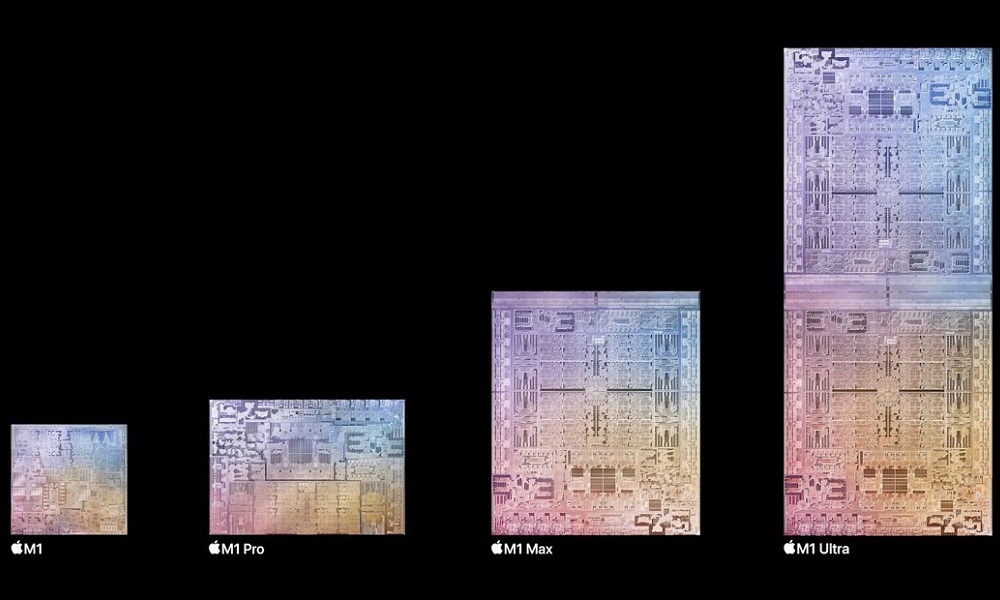
The Apple M1 Ultra SoC was a great surprise. As we told you at the time, this SoC uses two Apple M1 Max chips joined using UltraFusion technology, that allows to reach a bandwidth of 2.5 TB/s, and has all the necessary optimizations, both at the hardware and software level, to work as if it were a chip with a monolithic design.
During the last few weeks numerous performance tests have been appearing that showed, with greater or lesser success, the performance that the Apple M1 Ultra was capable of offering, but none of them had focused on compare its performance with that of the Apple M1 Max SoC. Engadget has decided to “open the melon”, and has done so with a round of real tests that leave us with some very interesting results.
In total, the Apple M1 Ultra’s CPU has 20 cores, while its GPU has 64 cores. An Apple M1 Max chip has a 10-core CPU and a 32-core GPU, so the difference in raw power between the two is double, something that we had already indirectly anticipated by saying that the Apple M1 Ultra SoC integrates two Apple M1 Max chips.
However, in real tests the Apple M1 Ultra fails to double the performance of the Apple M1 Max at all times. Engadget has tried a bit of everything: Adobe Lightroom and Premiere Pro, Davinci Resolve and Fusion, 3D modeling in Blender, deep learning tests like TensorFlow and Pytorch, and even played some games.
The results they have obtained in their tests confirm that indeed, at the CPU level, the M1 Ultra is twice as powerful as the M1 Max, but in GPU the results do not maintain that proportion, which confirms that there is still a lot of room for optimization in this regard. The performance gain shown by the 64-core GPU of the former compared to the 32-core GPU of the latter is 40% in the worst case, and 80% in the best of cases.
Personally, I think the problem with the low GPU scaling could lie in two main keys. On the one hand, the 2.5 TB/s interconnect system would not be enough to achieve linear performance scaling, and casts doubt on the possible jump to MCM designs in GPUs by giants such as NVIDIA. On the other hand, we have a problem related to the access of the Apple GPU to the system memory, a topic on which you can find more information in this link.